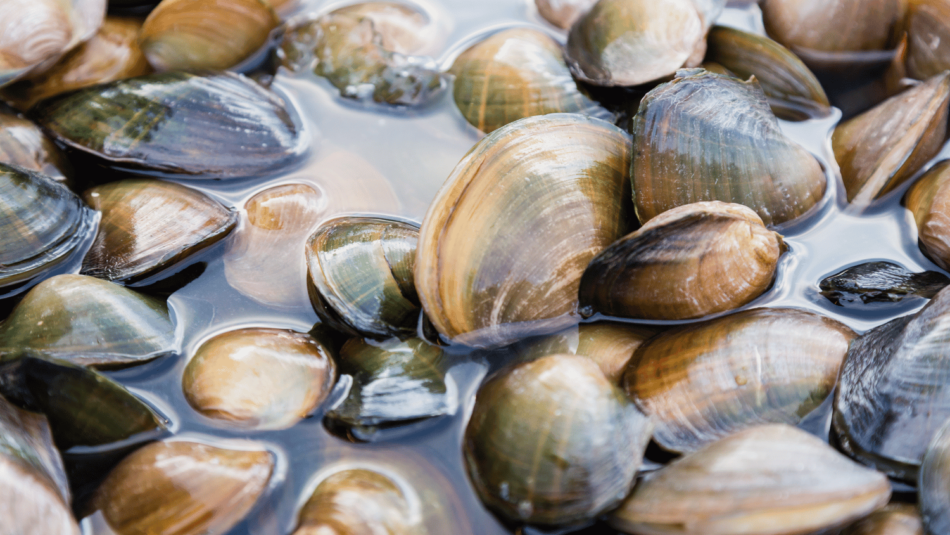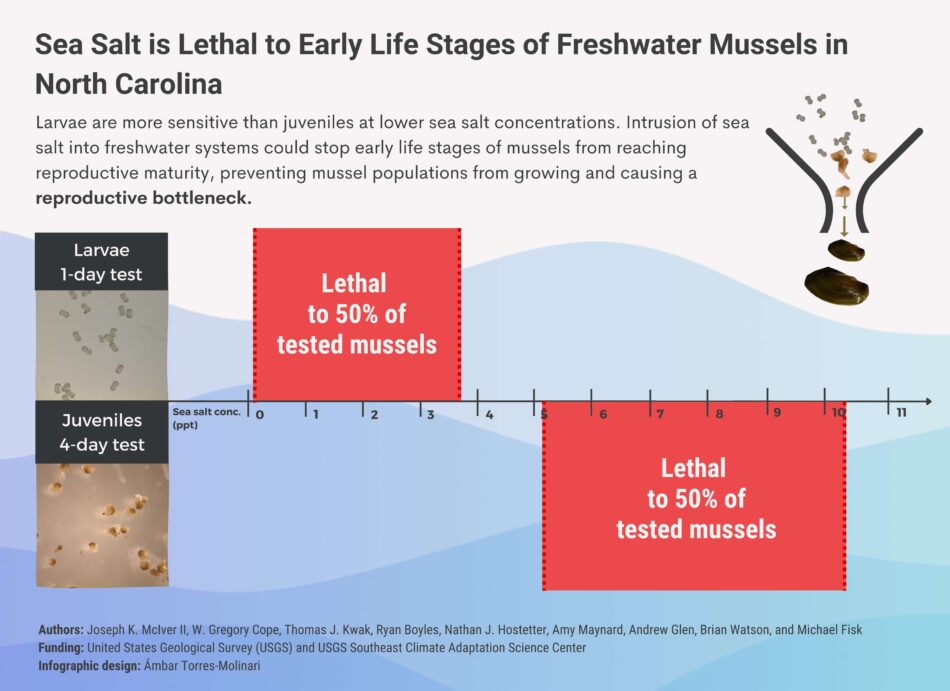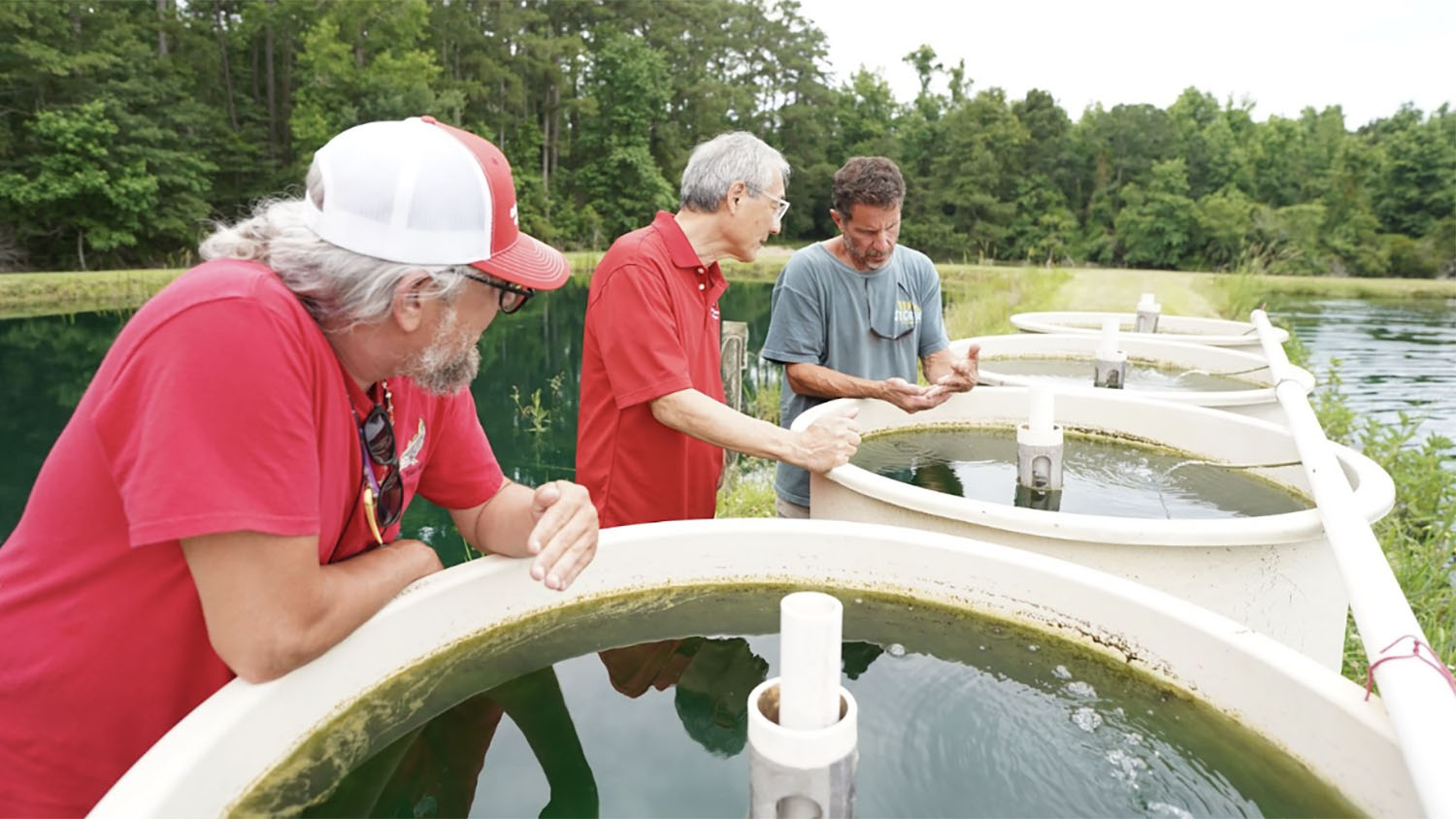Sea Salt is Lethal to Early Life Stages of Three Freshwater Mussel Species

The following blog post was written by Ambar Torres-Molinari during her time as a science communicator covering N-CASC and SE-CASC funded work.
The future of freshwater mussels may depend on how salty their waters become. A new study by NC State researchers found that larvae and juvenile freshwater mussels experience significant die-offs at relatively low saltwater concentrations. These findings raise concerns for the quality of rivers and the sustainability of these important filter-feeding bivalves that are nature’s water purifiers.
Freshwater mussels are important yet under-appreciated species for maintaining healthy freshwater ecosystems, with more than 70% listed as threatened, endangered, or of special concern in the United States. Mussels filter water through their bodies to eat plankton and other microscopic nutrients. As mussels filter their food, they also absorb contaminants and sediments from the water, effectively cleaning the waters around them.
Unfortunately, in North Carolina, freshwater mussels are declining rapidly due to habitat degradation, invasive species, and decreasing water quality. This study, however focuses on a relatively new threat to these species – the movement of saltwater into freshwater ecosystems, a process called “saltwater intrusion.” There are many ways salt can invade freshwater ecosystems. Climate change is one concern with sea level rise and coastal flooding. Human impacts are another.
“Salts can come from industrial discharge as well as road runoff during the winter time from salt brine applied to the roads,” says Greg Cope, a co-author to the study and William Neal Reynolds distinguished professor of applied ecology.
But, how much salt is too much?
To find out, researchers put larvae and juvenile mussels of three native species into different saltwater concentrations over different periods of time. They focused their research on only the early life stages of mussels because their survival dictates the size of the adult population. Larvae were exposed to salt water for 2 days while juveniles were exposed for 4 days, mimicking their most likely exposure times in nature.
“In the case of larvae, the 2 day test is replicating what we see in nature where these larvae are released by the parent mussel and then flow through the water before they attach to the gills or fins of a fish,” says Joseph McIver, lead author of the study and applied ecology alum. “The four day tests replicate the time when small juveniles are lying on the sediment after detaching from their fish host.”
They found that one species of freshwater mussel, a Tidewater Mucket, Atlanticoncha ochracea, that doesn’t normally encounter salt water in nature was the least resilient to any salt water for any period of time. This was an expected result, because the larvae used in this test were collected from adult female mussels who had never encountered any salt water and had no adaptations to survive in those conditions. But, larvae and juvenile stages of all other mussel species had significant mortality during increasingly salty conditions, too, even though they do occasionally encounter salty conditions in nature.

“This is important because if the larvae can’t survive then they’re not contributing to furthering these populations,” says Cope. “Sea level rise and saltwater intrusion are just additional threats that scientists and natural resource managers will have to consider when managing these important species into the future.”
“Increasing salinity monitoring equipment in coastal rivers can help manage and conserve freshwater mussels that are at risk because of these exposures to sea salt,” says McIver.
The paper, “Assessing the Toxicity of Sea Salt to Early Life Stages of Freshwater Mussels: Implications for Sea Level Rise in Coastal Rivers” was published in Environmental Toxicology and Chemistry on September 20, 2023. The study was funded through Research Work Order No. 234 from the US Geological Survey Southeast Climate Adaptation Science Center.
CONTACTS:
Joseph McIver | jkmciver.ncsu@gmail.com
W. Greg Cope | gcope@ncsu.edu
This post was originally published in Department of Applied Ecology.
- Categories:


